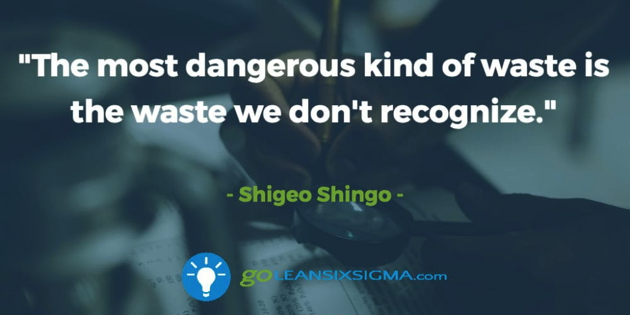When it comes to development, “it takes a village” to get your eLearning from inception to production. Consider the number of people involved in the process: a) the subject matter expert (SME) who provides the content, b) someone who creates the training, c) the client who approves it, d) yet another person to launch it and e) others who may “touch” it along the way. With potential disruptions occurring at each step, providing a solution to your users can be time-consuming. So, what can you do to work more efficiently, while increasing overall quality? Enter lean thinking.

Source: Experity Health
Establish a lean mindset
Lean is a well-known continuous improvement methodology used to identify disruptions in a product or service stream. From its manufacturing origins with Henry Ford and innovations through the Toyota Production System, lean principles have since been applied across various industries. The goal of lean is to produce exactly what’s needed, when it’s needed, with minimal resources and without issues.
To “think lean” is to create a culture within the workplace that looks at processes from start to finish. In addition, lean thinking equips people with the skills and discipline to lead, while leveraging tools to solve the right problems for the long run. It ultimately improves the flow of information or work by eliminating waste.
Take out the trash
In the book Lean Thinking, waste is defined as “any activity that absorbs resources but creates no value.” There are eight types of waste that can get in the way of providing value: defects, overproduction, waiting, non-utilized talent, transportation, inventory, motion and extra-processing. They can be easily remembered with a simple acronym: DOWNTIME.

Figure 1: The 8 Wastes (Source: GoLeanSixSigma.com)
When waste is removed, only the steps required to deliver the product or service should remain in the process. Your mission—should you choose to accept it—is to look for ways to increase the value of your work by reducing wasteful activities in your development processes.

Source: Quotefancy
Go to the gemba
One of the best methods for identifying waste is the “gemba walk,” which allows you to go and see the actual place (the gemba) where the work happens. You can then observe different processes in action, ask questions, and seek opportunities for improvement. Granted, waste in the office is not as easy to see as it would be on a production floor.

Source: GoLeanSixSigma.com
In an article describing the eight wastes of lean, Megan Torrance (2014) includes a list of “the usual suspects” you may encounter during the gemba walk. The following table provides an example from each category of waste.
|
Type of Waste |
Example(s) |
|
Defects |
Receiving last-minute changes to the product or process being trained |
|
Overproduction |
Including “everything but the kitchen sink” in the training |
|
Waiting |
Waiting for information from others |
|
Non-utilized talent |
Assigning team members with the wrong skill sets or roles to the project |
|
Transportation |
Sending files via email or file-sharing services, increasing download times and causing version control issues |
|
Inventory |
“Hoarding” of project files, drafts, assets, etc. in multiple locations |
|
Motion |
Requesting people to project meetings who have little need to be there |
|
Extra-processing |
Incorporating changes that have little or no value to the training |
Table 1: Examples of waste in the workplace
Take a gemba walk periodically to reinforce the improvements made and prevent prior conditions from returning. Once the improvements have become the standard, the frequency of the walks can be decreased, but should continue on a regularly scheduled basis.
Tools of the trade
Here are a few lean thinking tools you can use for your development processes:
- Value stream map - A visual display of every step involved in the process flow needed to deliver a product/service
- Five Whys - The practice of asking “why?” repeatedly whenever a problem is encountered in order to discover the root cause
- 5S - A five-step technique to create and maintain an intuitive workspace – sort, straighten (or set in order), shine, standardize, and sustain
Further reading
The eBook 138 Tips on Saving Time, Money & Sanity in Your eLearning contains several ideas on how to reduce costs, save time without sacrificing quality, and maintain your sanity while “doing more with less.” It contains a wealth of time-saving best practices for various topics; from working with SMEs to organizing your content. The information offered in this resource can help you streamline your processes to become a lean, mean waste-busting machine!
References
The Lean Accountants. (March 30, 2017). 8 Wastes in the Lean Office.
GoLeanSixSigma.com. (n.d.). Lean Glossary, Retrieved February 29, 2020.
Pangarkar, A. M. and Kirkwood, T. Lean Learning: Why You Need to Cut the Fat to Demonstrate Learning Value. Training Industry Magazine, Nov/Dec 2016, 50-53. Retrieved February 29, 2020.
Torrance, M. (June 18, 2014). Better eLearning: Agile, LLAMA, and Lean. Learning Solutions. The eLearning Guild. Retrieved February 29, 2020.
Womack, J.P. and Jones, D.T. (1996). Lean Thinking: Banish Waste and Create Wealth in Your Corporation. Simon & Schuster.
Note: Additional references were retrieved from the Lean Enterprise Institute, whose mission is “to make things better through lean thinking and practice.”


